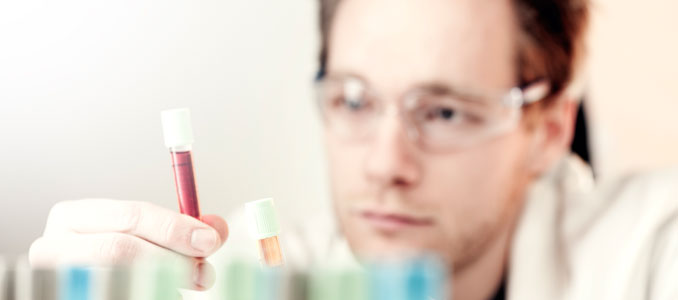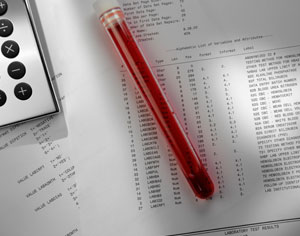Testosterone Blood Test Results Explained
When a blood test is taken to measure testosterone levels in a patient who suspects their levels may be low (hence why they are experiencing negative ailments) total serum testosterone will be measured. Total serum testosterone is testosterone that is bound to a protein called sex hormone binding globulin or SHBG. This is most always adequate for a correct diagnosis of what is also called low T.
On occasion, it will be combined with measuring:
- Luteinizing Hormone – LH
- Follicle Stimulating Hormone – FSH
- Free Testosterone – Testosterone that is not bound to a protein called sex hormone binding globulin (SHBG)
However, these additional tests are usually not needed for an age related testosterone deficiency. Free testosterone is usually measured when the patient is dealing with sexual problems as their primary complaint.
Understanding where testosterone levels should be in a healthy man is important when learning about how testosterone blood test results are interpreted. It is important to know that different clinics will have varying measurements that they consider to be normal, too low or too high. Here is an example of low, normal and high total cholesterol levels in men over 30:
Testosterone Blood Test Results Interpretation
|
Age of Man |
Low Testosterone Levels |
Normal Testosterone Levels |
High Testosterone Levels |
|
Men over 30 |
219 ng/dL |
Total: 219 – 1009 ng/dL |
1,009 ng/dL |
|
Men over 40 |
201 ng/dL |
Total: 201 – 993 ng/dL |
993 ng/dL |
|
Men over 50 |
170 ng/dL |
Total: 170 – 918 ng/dL |
918 ng/dL |
|
Men over 60 |
156 ng/dL |
Total: 156 – 700 ng/dL |
700 ng/dL |
Both men and women can suffer with low testosterone levels. In men, this vital hormone is created in the testicles, while women create testosterone in the ovaries. Testosterone is released from these places respectably into the bloodstream where it can be tested with a simple blood sampling.
Testing usually takes place in a professional laboratory in the morning hours. This is because testosterone levels are usually highest when a person first wakes up from sleep. No special preparation is needed (such as fasting) before a testosterone test is given. The test is usually quick and easy and is not painful to the patient.
How Is A Testosterone Test Taken
Knowing the steps of a testosterone test can be helpful to decrease any possible anxiety that may come along with getting the test completed. The patient should not feel apprehensive about taking a testosterone test. It is very simple, easy and quick.
- The patient will sit comfortably in a chair and rest his or her arm, palm facing up on a flat surface.
- The clinician will tie a thick rubber band around the upper portion of the arm above the elbow. This is done to stop the flow of blood and engorge the veins in the elbow area.
- The elbow area will be sterilized with an alcohol pad.
- A needle will be gently put into a vein and only a small prick should be felt.
- At this point, some clinicians will remove the rubber band from the upper part of the arm as blood is drawn out into a tube.
- When the proper amount of blood is taken, the needle will be removed. Some clinicians will take the rubber band off at this point.
- A gauze pad or often a cotton ball will be put over the injection area and pressure will be applied.
- A bandage will be put over the gauze or cotton ball.
This is all that is involved in taking a testosterone blood test. In a short period of time, the results will be sent to the online ordering clinic for a licensed doctor to evaluate. Your clinical advisor can then help you understand why you are feeling lethargic, tired, weak, non-sexual, disoriented and more as you get your testosterone blood test results explained.
- HealthLabs.com
- MedlinePlus
- Prostate.net
- Challenges in Testosterone Measurement, Data Interpretation, and Methodological Appraisal of Interventional Trials J Sex Med. 2016 Jul; 13(7): 1029–1046.Landon W. Trost, MD and John P. Mulhall, MD




